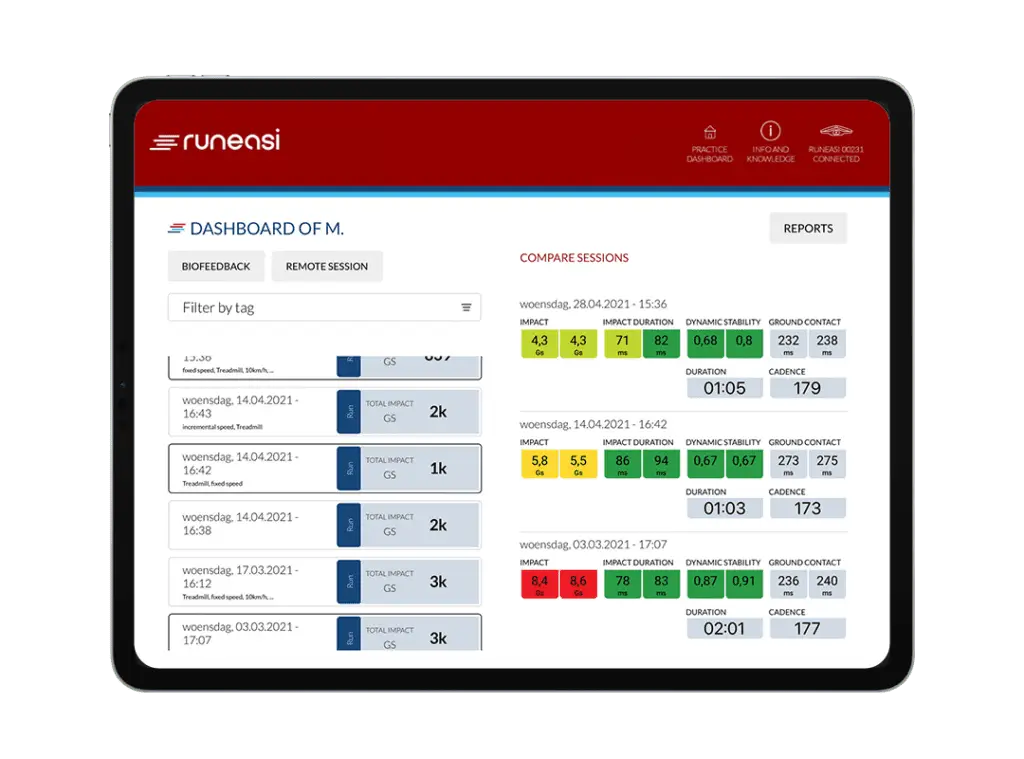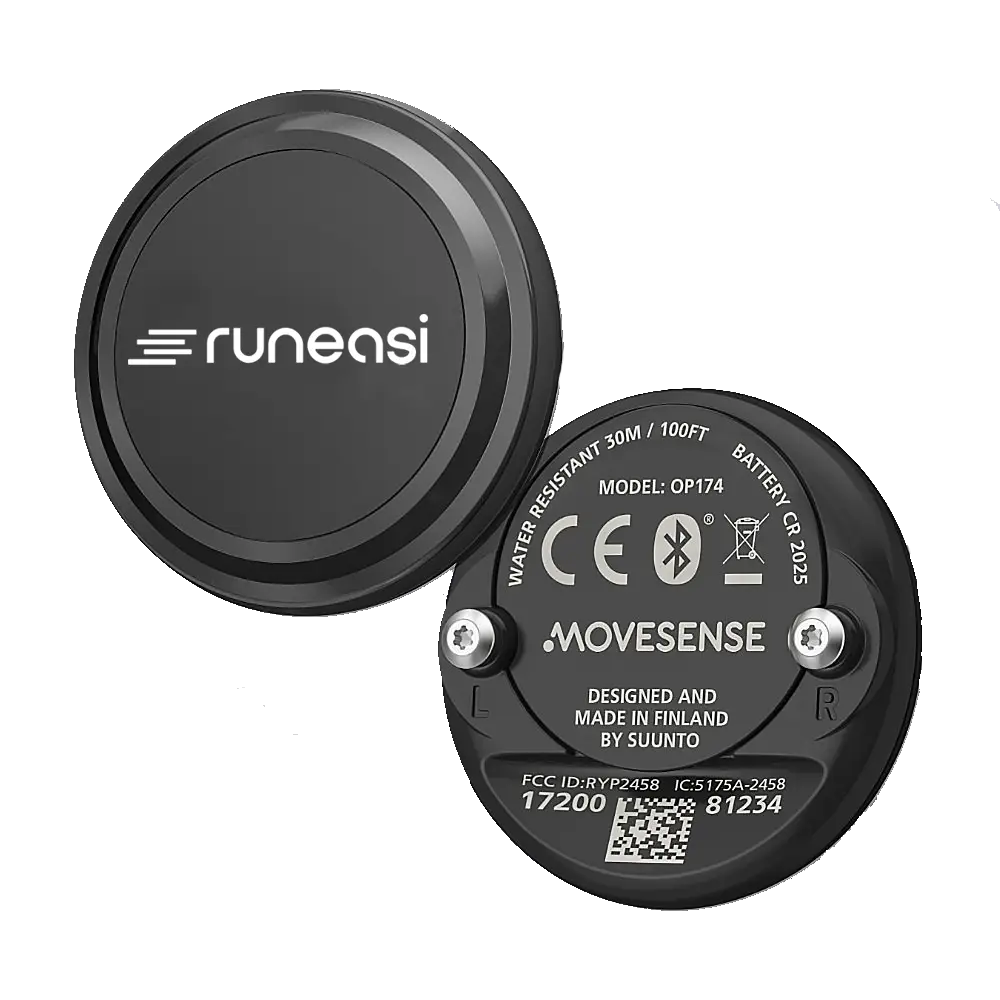Adductor injury football player linked to unilateral instability
By Matyáš Uzlík – Runeasi expert
In this insightful use case, provided by Matyáš Uzlík, we illustrate the importance of evaluating a football player’s loading pattern during the return-to-sport phase. Given the player’s extensive injury history, including knee and ankle ligament injuries requiring surgery, as well as meniscal and cartilage tears over four years, Matyas recognized the need for a cautious approach in gradually reintroducing the player to full training loads.
Loading pattern before injury
The football player exhibited a significant difference in dynamic stability, with lower stability on the left leg. Despite displaying reduced shock absorption on the left leg, there was a consistent observation of lower impact magnitude and shorter ground contact time. This suggests a protective gait pattern, and be therefore cautioned with going back to full training load.

Despite the potential risks, the player went back to full training load with an overuse injury a few weeks later on the adductor muscles. Matyas acknowledges the importance of objective data to estimate the risks and be more cautious with this protective gait pattern.
“We’ve got to listen to these warning signs and focus on improving stability, mobility, and strength. We can’t rush this process.” Matyas also pointed out, “With Runeasi’s help, we can detect compensation strategies and keep track of how we’re progressing, making sure we’re moving forward safely and steadily.”

Provided by Matyáš Uzlík
Matyáš has devoted his life to football. Despite facing injuries, he delved into biomechanics to understand his body better. With Runeasi's help, he now aids others in optimizing performance and preventing injuries. Matyáš's journey through football and technology has led him to exciting clubs and incredible people, shaping him into a true advocate for biomechanical understanding in sports.







